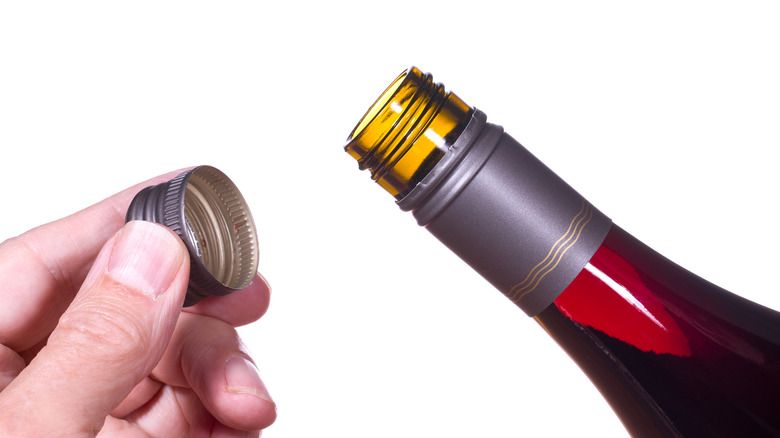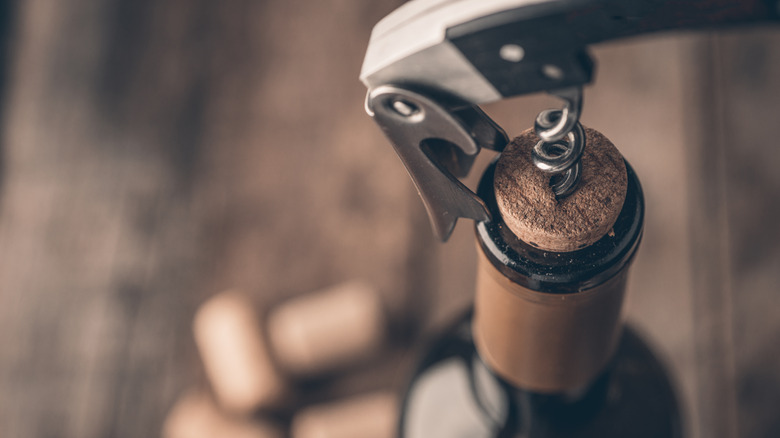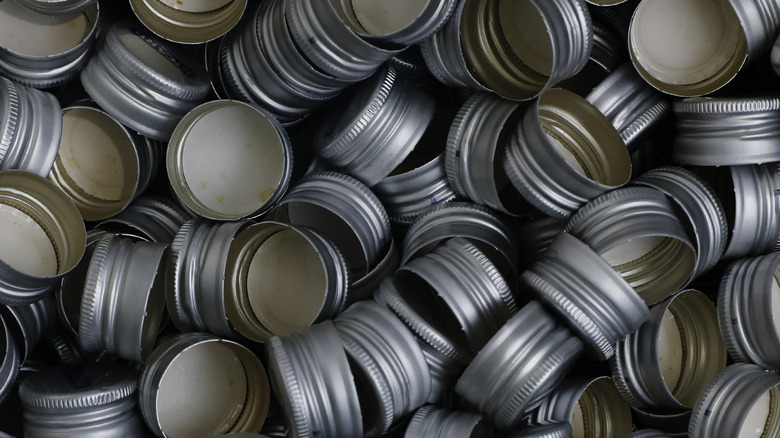The Reason Screw Top Wine Bottles Are More Reliable Than Cork
Screw-top wine bottles have gotten a bad rap, but it's not their fault. The world of wine changes slowly, and it's easy for the old guard to stick its nose up at any kind of innovation, no matter how effective.
This new type of wine bottle was invented in 1959 by the French company Le Bouchon Mecanique, commissioned by Australian winemaker Yalumba. Wine corks, which are made from the bark of the cork oak tree, are susceptible to contamination from various chemicals, and when this contamination is passed onto the wine itself, it can alter the taste, resulting in the effect known as cork taint. Yalumba hoped to find a solution to prevent cork taint, which was prevalent in wineries in Australia and New Zealand in the latter half of the 20th century.
Because of this, most Australian wineries (including these five Australian wines to drink now), and nearly all New Zealand wineries, have switched to using screw-top bottles. But an unexpected additional benefit has allowed them to continue to grow in popularity: The fact that screw-top bottles can be customized to limit or allow a specific oxygen percentage into the wine.
Screw top vs. cork
Traditional wine corks are porous, allowing a certain amount of oxygen to filter through them, but these corks are also prone to breaking. Over time, the flow of oxygen affects the taste of the wine, allowing it to age and transform into something more mature and interesting. Too much oxygen, however, causes oxidation, which can make the wine taste sour or unappealing. It even changes the color of the wine, turning it a murky brown.
A traditional cork will allow approximately one milligram of oxygen into the wine per year. Screw-top wine corks, on the other hand, prevent cork taint and oxygen contamination, allowing wines to be stored for much longer without concern for how the wine might be affected.
A wine corked with a traditional screw top, which lets in almost no oxygen, might benefit from some degree of aeration after opening, but this still gives both the wine producer and the wine drinker more control over their bottle. And in recent years, innovation in screw-top wine bottles has gotten oxygen measurements down to a science, allowing for minute changes that can be customized to the type of wine and how much oxygen it needs. Corks don't allow any degree of control — which, technically, makes them inferior.
Benefits of screw top wine bottles
Beth Forrest of New Zealand winery Forrest Wines explained to Food Republic how this technology can be tailored to different wines: "Full-bodied red wines can benefit from a higher oxygen intake cap when looking for a faster development phase, and a lighter oxygen intake cap is well suited if you intend to control the shelf life of a wine for long term aging." This is particularly beneficial for wines produced in New Zealand or Australia, which are often consumed within a few years, compared to French or Italian wines that might be stored for decades before opening.
Forrest uses three different types of screw tops produced by the company VinPerfect, which specializes in this type of oxygen-regulated screw top. The amount of oxygen released into the wine per year can be measured down to a tenth of a milligram, using multiple layers of PET, aluminum, and other proprietary materials to insulate the screw cap. So, while newfangled, these innovative screwtops are actually more reliable than traditional cork.



